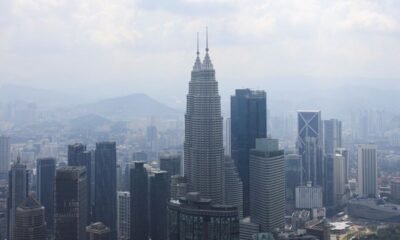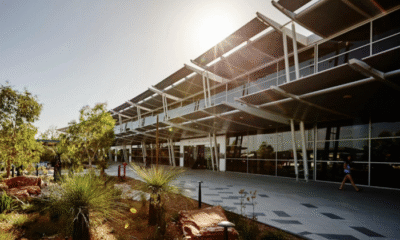Travel Guides & Articles
Malaysia, Thailand, China and India Shape the New Face of Asian Tourism as Visa-Free Travel and Safety Concerns Shift Traveler Flows Across the Region

Sunday, August 3, 2025
The landscape of Asian tourism is undergoing a dramatic transformation in 2025, with Malaysia, Thailand, China, and India emerging as key players in a shifting regional travel narrative. Malaysia has surged ahead as a top destination by offering visa-free access to millions and investing heavily in airport infrastructure and traveler safety, attracting record numbers of international arrivals. Meanwhile, Thailand—long considered the region’s tourism leader—has seen a dip in confidence due to natural disasters, security incidents, and escalating border tensions that have led to widespread booking cancellations. On the other side of the equation, outbound travelers from China and India are driving this change, with Chinese tourists pivoting toward safer and more accessible destinations like Malaysia, and Indian travelers taking advantage of relaxed visa rules to explore the region more freely. Together, these four countries are reshaping how, where, and why people travel across Asia in 2025.
Visa-Free Travel Opens the Door for Growth
A major catalyst behind Malaysia’s rise is its proactive visa exemption policy, which has eliminated bureaucratic barriers for millions of travelers. Visitors from key tourism markets have benefited from smoother and faster entry procedures, helping drive traffic during peak and off-peak periods alike.
Malaysia recently extended its visa-free access for citizens of China, offering a five-year exemption with a future option to extend it through the next decade. This move has streamlined the travel process and positioned Malaysia as an attractive destination for tour operators, families, and repeat visitors. Likewise, tourists from India can enter Malaysia without a visa through 2026, further widening the country’s appeal across the Asian continent.
These relaxed travel policies have been instrumental in converting interest into bookings, especially from travelers seeking convenient, no-hassle getaways.
Airport Infrastructure Scaled for Surge
To meet the growing influx of visitors, Malaysia has expanded and upgraded key infrastructure—particularly at its primary international gateway. Terminal 1 at Kuala Lumpur International Airport has undergone a major improvement valued at RM30 million (US\$7 million). This renovation focused on optimizing passenger flow, expanding facilities, and accommodating rising international traffic.
With enhanced terminal operations, better baggage handling, and streamlined immigration counters, the airport now serves as a more efficient entry point for the millions of tourists choosing Malaysia this year. The improvements have also improved Malaysia’s image as a modern and capable host for long-haul and regional travelers.
Travel Confidence Boosted Through Security Reinforcement
Beyond accessibility, Malaysia’s strategic focus on border security and travel safety has played a key role in maintaining traveler confidence. The government has tightened screening measures and refused entry to large numbers of passengers from flights identified as high-risk. This preventive approach, coupled with increased airport surveillance and a visible security presence, has reduced risks and reassured international arrivals.
The emphasis on maintaining a safe environment has become particularly significant in 2025, with global travelers paying closer attention to destinations that offer peace of mind alongside memorable experiences. Malaysia’s firm stance on security has helped it stand out among its regional competitors.
Thailand Faces Setbacks in a Difficult Year
In contrast, Thailand’s tourism sector has faced multiple disruptions in the early part of the year, affecting its ability to maintain momentum. Several safety-related incidents and environmental crises have eroded traveler confidence, leading to a drop in forward bookings and arrival numbers.
An international incident involving tourists early in the year drew widespread media attention and created concern over traveler safety. Just weeks later, a powerful earthquake struck in late March, causing travel delays, infrastructure challenges, and cancellations across several provinces. These disruptions were followed by tensions along the eastern border, which escalated into military activity, resulting in widespread cancellations at hotels and resorts near affected regions.
As uncertainty grew, some source markets issued advisories, and travelers began to reroute their trips to alternative destinations across the region.
Regional Tourism Landscape Undergoes Realignment
For years, Thailand enjoyed a dominant position in Southeast Asia’s tourism industry, consistently drawing millions with its beaches, festivals, and culinary offerings. However, the events of 2025 have changed the playing field, allowing Malaysia to rise and take center stage.
Malaysia’s ability to align visa policy, airport upgrades, and public safety under a cohesive tourism strategy has proven highly effective. Destinations such as Langkawi, Sabah, Penang, and Sarawak are also drawing more international attention, offering travelers alternatives beyond traditional urban centers.
This broader promotion of diverse locations has distributed tourist traffic more evenly across the country and contributed to record-high occupancy rates in several secondary regions.
A New Tourism Leader Emerges
With global airlines increasing connectivity to Malaysian cities and digital marketing campaigns drawing attention to lesser-known gems, the country is well-positioned to maintain its momentum through the remainder of 2025.
While Thailand remains a strong competitor, its recovery will hinge on how effectively it restores confidence and stabilizes the domestic situation. For now, Malaysia’s coordinated approach has not only earned it the top spot in regional arrivals—it has also redefined what effective tourism leadership looks like in a changing world.
Travel Guides & Articles
Tharoor calls for targeted campaigns beyond ‘Incredible India’ to boost tourism

Calling for a more nuanced and diversified promotional strategy, Dr Shashi Tharoor, Member of Parliament, has urged India’s tourism sector to move beyond the singular “Incredible India” campaign and adopt a more segmented approach to marketing the country’s vast and varied offerings. He emphasised the need to highlight niche sectors such as wildlife, beaches, heritage, and culture, arguing that a one-size-fits-all campaign is insufficient to reflect India’s diversity. “One ‘Incredible India’ campaign is not enough,” Tharoor said. “We need to showcase the many different aspects of India that exist within our borders.”
Speaking at the Skål India National Congress 2025 in Mumbai, he also pointed to the glaring absence of Chinese tourists in the country, despite their growing presence in global tourism. “The Chinese are travelling across the world except India. Let’s bring some Chinese money into our country,” he remarked.
Adding a touch of humour to his address, Tharoor quipped, “Perhaps we could even attract some British tourists for a colonial heritage tour—though there aren’t many monuments left; they took more than they left.”
His remarks added both insight and levity to a serious discussion on revitalising Indian tourism, offering clear and actionable ideas to industry leaders and policymakers alike.
Tharoor also called for urgent structural reforms in the tourism sector, highlighting the need to enhance women’s safety and strengthen hospitality infrastructure across the board. “Our nation carries the perception that India is not safe for women. We must change this image. It’s time for action. Increasing the presence of women police officers in tourist areas would be a step in the right direction,” he stated.
He emphasised tourism’s role as a key driver of economic growth, citing its potential to create employment and generate significant revenue. “We have a lot to do. Tourism is a vital sector—it generates jobs and enhances government income. Infrastructure development must be prioritised.”
Pointing to gaps in the current hospitality ecosystem, he added, “We either have high-end five-star hotels or substandard facilities—there’s virtually nothing in the middle. We need to build a lot more to fill this gap.”
Tharoor’s address reflected a mix of strategic insight and wit, resonating with tourism professionals, investors, and policymakers seeking to position India as a more attractive and accessible global destination.
Travel Guides & Articles
Where to Shop for Jewelry in Jaipur, India

From left: Courtesy of Santi; Abhishek Bali
Jaipur has long seduced travelers with its warren of old bazaars, royal palaces, and glittering treasures. But behind one of the city’s pink façades lies a rarer find: Royal Gems & Arts, a jewelry business housed inside Saras Sadan, an 18th-century haveli, or mansion, a short walk from the iconic Hawa Mahal palace.
Run by ninth-generation jeweler Santi Choudhary with his wife, Shobha, and son, Krishna, the atelier feels like a museum and is open by appointment only. The Choudharys, descendants of the city’s founding families, supply exquisite pieces to royalty and collectors around the world.
Today, Santi oversees a trove of Mughal- and Rajput-inspired pieces, some of which have been loaned to the world’s top museums. Krishna joined the family business while studying Islamic and Indian art in London. In 2019, he started his own label, Santi, with an atelier in London’s Mayfair district showcasing bold, contemporary designs with rare stones set in gold, titanium, or platinum.
Together, the Choudharys’ shops offer a glimpse into India’s past and present—one rooted in Jaipur’s traditions, the other reinterpreting them for a new generation. While the haveli in Jaipur focuses on heritage designs, Santi in London crafts one-of-a-kind pieces, like a rare 18th-century, pyramid-shaped Colombian emerald set in 18-karat white gold with reverse-set diamonds. “Every antique stone we work with brings a mystery with it, and we add something to it for the future,” Krishna says.
Courtesy of Santi
Run by ninth-generation jeweler Santi Choudhary with his wife, Shobha, and son, Krishna, the atelier feels like a museum and is open by appointment only. The Choudharys, descendants of the city’s founding families, supply exquisite pieces to royalty and collectors around the world.
Today, Santi oversees a trove of Mughal- and Rajput-inspired pieces, some of which have been loaned to the world’s top museums. Krishna joined the family business while studying Islamic and Indian art in London. In 2019, he started his own label, Santi, with an atelier in London’s Mayfair district showcasing bold, contemporary designs with rare stones set in gold, titanium, or platinum.
Together, the Choudharys’ shops offer a glimpse into India’s past and present—one rooted in Jaipur’s traditions, the other reinterpreting them for a new generation. While the haveli in Jaipur focuses on heritage designs, Santi in London crafts one-of-a-kind pieces, like a rare 18th-century, pyramid-shaped Colombian emerald set in 18-karat white gold with reverse-set diamonds. “Every antique stone we work with brings a mystery with it, and we add something to it for the future,” Krishna says.
More Must-visit Jewelers in Jaipur
Founded by Akshat Ghiya—a second-generation jeweler who was raised in India and Italy—this store has made a name for itself with its unconventional, contemporary pieces. Ghiya uses stones like pink and purple sapphire, onyx, citrine, and tourmaline to create wearable confections.
This shop, which features striking geometric styles, is attached to a museum that holds more than 2,500 objects—textiles, coins, daggers, and jewelry—collected by the owners’ late father.
Established in 1852, this store is a celebrity favorite. Princess Diana, Oprah, and Gwyneth Paltrow have all ogled the traditional Indian craftsmanship blended with contemporary design. After the eighth-generation jeweler Munnu Kasliwal died in 2012, his son Siddharth took over, and today runs the business alongside his brother, cousins, and uncle.
A version of this story appeared in the October 2025 issue of Travel + Leisure under the headline “Jaipur’s Crown Jewel.”
Travel Guides & Articles
PM Modi inaugurates Purnia Airport Terminal: A new gateway to Seemanchal |

The Indian Prime Minister Narendra Modi recently inaugurated the new interim terminal building at Purnia Airport. Purnia is among Bihar’s one of the most crucial towns in the Seemanchal region. The facility has a record time of less than five months and it is now all about opening doors to growth, tourism, and opportunity in a new region.The inauguration was part of projects worth over INR 40,000 crore launched across Bihar. These include new trains, road and rail upgrades, housing initiatives, and community development programs. At the inauguration, PM Modi mentioned how important Seemanchal’s progress is a vision of a “Viksit Bihar” and, ultimately, a “Viksit Bharat.” He also talked about the government’s commitment to ensuring every family has a proper home under the PM Awas Yojana, with 40,000 families in Bihar receiving houses under the scheme. The message was clear: development in this region is not just about infrastructure but also about dignity and better living.As far as travellers are concerned, the prime highlight is that Purnia will now find itself on India’s aviation map. There are commercial flights already taking off from the new terminal which is a huge achievement. This means easier access to Seemanchal for both business visitors and tourists.For a traveller, this new terminal shows smoother journeys and a modern point of arrival in Purnia. The facility’s timely construction also shows an urgency to improve Bihar’s connectivity on an urgent level. The surrounding projects add to this transformation. The doubling of railway lines between Bhagalpur, Dumka, and Rampurhat, as well as plans for a high-speed rail corridor connecting Mokama and Munger to Buxar and Bhagalpur, promise faster and more reliable transport in the years to come.
The developments go beyond transport too. A major river link project between Kosi and Mechi aims to support irrigation and reduce the impact of floods, which will eventually make rural tourism in the area more accessible.
For those planning a trip, the improved connectivity puts Purnia within easier reach. The region has long remained off mainstream travel itineraries, but with flights now operational, visitors can explore Seemanchal’s blend of rural landscapes, cultural diversity, and developing infrastructure. Whether you’re arriving for work or leisure, the experience of landing in Purnia has already changed — you step into a terminal that represents progress and possibility.The successful story of Purnia’s new airport terminal is about more than bricks and mortar. It is about linking a once-distant corner of Bihar to the wider world and inviting travellers to look at the region with fresh look.
-

 Business3 weeks ago
Business3 weeks agoThe Guardian view on Trump and the Fed: independence is no substitute for accountability | Editorial
-
Tools & Platforms1 month ago
Building Trust in Military AI Starts with Opening the Black Box – War on the Rocks
-

 Ethics & Policy2 months ago
Ethics & Policy2 months agoSDAIA Supports Saudi Arabia’s Leadership in Shaping Global AI Ethics, Policy, and Research – وكالة الأنباء السعودية
-

 Events & Conferences4 months ago
Events & Conferences4 months agoJourney to 1000 models: Scaling Instagram’s recommendation system
-

 Jobs & Careers3 months ago
Jobs & Careers3 months agoMumbai-based Perplexity Alternative Has 60k+ Users Without Funding
-

 Podcasts & Talks2 months ago
Podcasts & Talks2 months agoHappy 4th of July! 🎆 Made with Veo 3 in Gemini
-

 Education3 months ago
Education3 months agoVEX Robotics launches AI-powered classroom robotics system
-

 Education2 months ago
Education2 months agoMacron says UK and France have duty to tackle illegal migration ‘with humanity, solidarity and firmness’ – UK politics live | Politics
-

 Podcasts & Talks2 months ago
Podcasts & Talks2 months agoOpenAI 🤝 @teamganassi
-

 Funding & Business3 months ago
Funding & Business3 months agoKayak and Expedia race to build AI travel agents that turn social posts into itineraries















